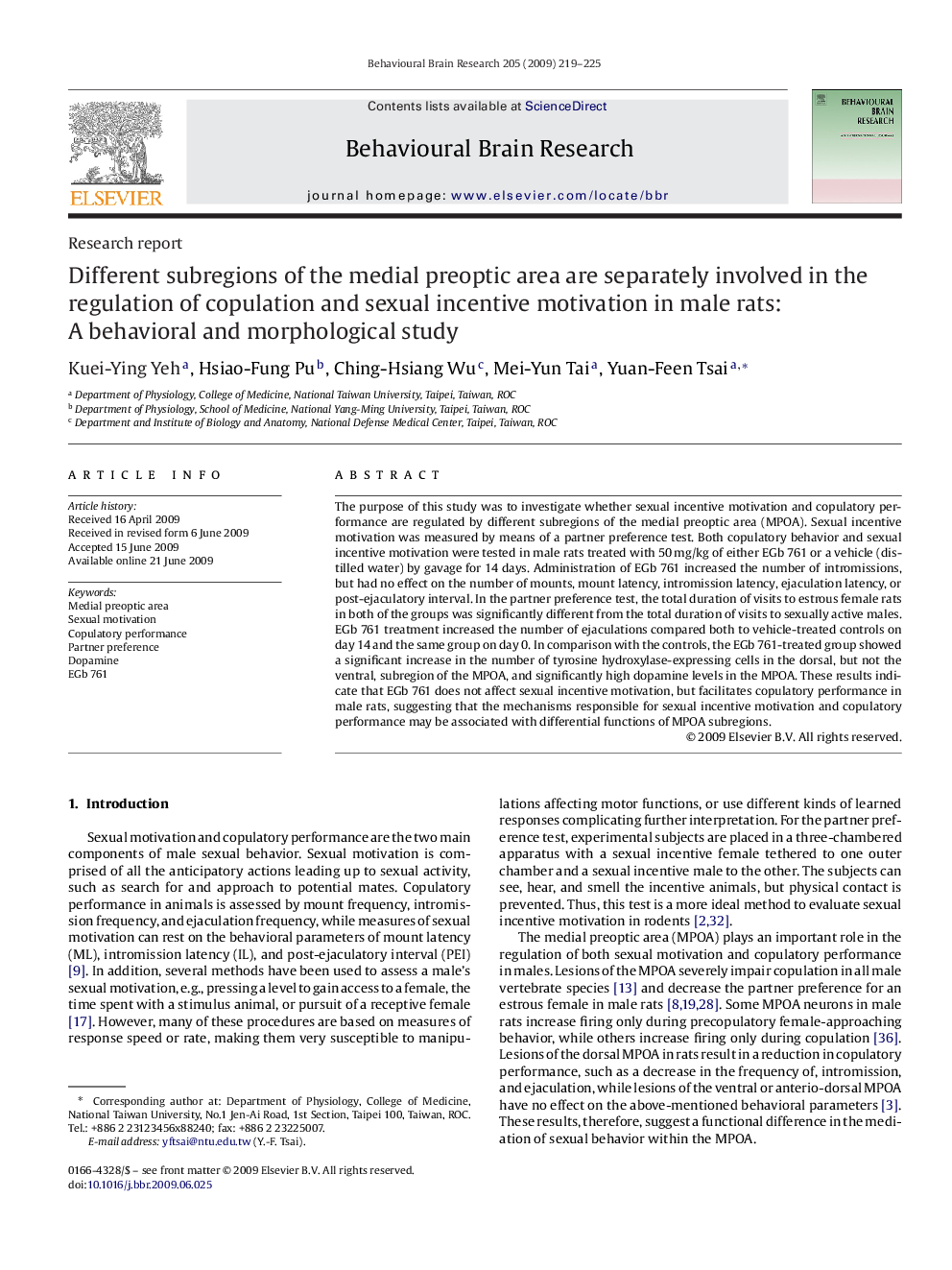| Article ID | Journal | Published Year | Pages | File Type |
|---|---|---|---|---|
| 4314529 | Behavioural Brain Research | 2009 | 7 Pages |
The purpose of this study was to investigate whether sexual incentive motivation and copulatory performance are regulated by different subregions of the medial preoptic area (MPOA). Sexual incentive motivation was measured by means of a partner preference test. Both copulatory behavior and sexual incentive motivation were tested in male rats treated with 50 mg/kg of either EGb 761 or a vehicle (distilled water) by gavage for 14 days. Administration of EGb 761 increased the number of intromissions, but had no effect on the number of mounts, mount latency, intromission latency, ejaculation latency, or post-ejaculatory interval. In the partner preference test, the total duration of visits to estrous female rats in both of the groups was significantly different from the total duration of visits to sexually active males. EGb 761 treatment increased the number of ejaculations compared both to vehicle-treated controls on day 14 and the same group on day 0. In comparison with the controls, the EGb 761-treated group showed a significant increase in the number of tyrosine hydroxylase-expressing cells in the dorsal, but not the ventral, subregion of the MPOA, and significantly high dopamine levels in the MPOA. These results indicate that EGb 761 does not affect sexual incentive motivation, but facilitates copulatory performance in male rats, suggesting that the mechanisms responsible for sexual incentive motivation and copulatory performance may be associated with differential functions of MPOA subregions.
